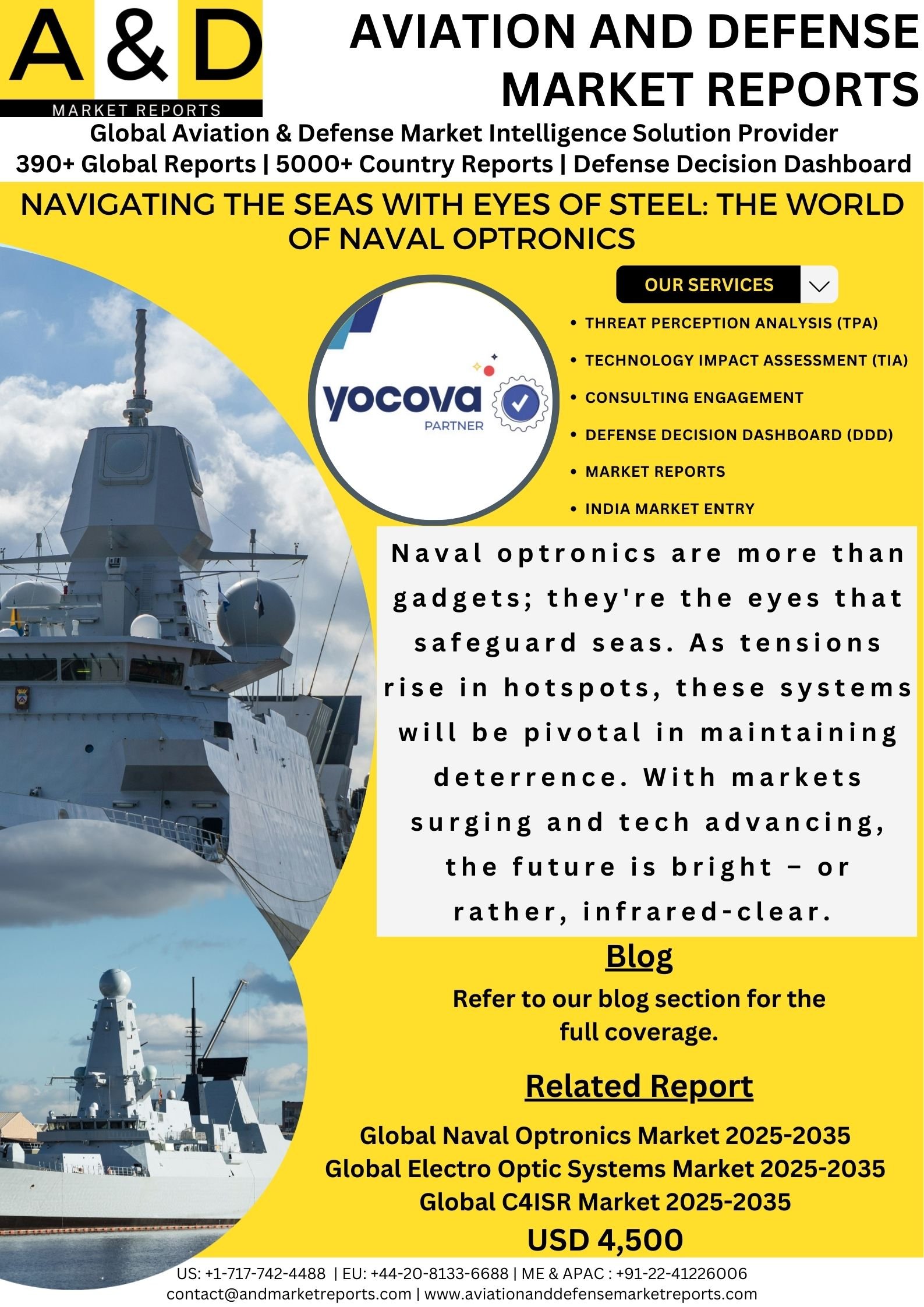In the vast expanse of the world’s oceans, where threats can emerge from fog-shrouded horizons or silent depths, naval forces rely on more than just radar and sonar. Enter naval optronics – a fusion of optics and electronics that equips ships and submarines with superhuman vision. These systems are the unsung heroes of maritime defense, enabling 24/7 surveillance, precise targeting, and enhanced situational awareness in even the harshest conditions. From detecting stealthy adversaries to guiding missiles with pinpoint accuracy, naval optronics represent the cutting edge of technology where light meets warfare. In this blog, we’ll dive into what makes these systems tick, their evolution, key players, and the future ahead. Buckle up for a 1000-word journey through this fascinating domain.
A Brief History of Naval Optronics
The roots of naval optronics trace back to World War II, when early periscopes and optical rangefinders were the pinnacle of submarine and surface ship observation. Post-war advancements in electronics, particularly the integration of infrared sensors in the 1960s, marked a turning point. By the 1980s, electro-optical systems began replacing purely mechanical optics, incorporating cameras, lasers, and thermal imagers.
Today, optronics have evolved into sophisticated multi-sensor suites. For instance, optronic masts on submarines allow commanders to scan the surface without fully exposing the vessel, minimizing radar detection risks. This shift from analog to digital has been driven by the need for stealth in asymmetric warfare, where low-observable threats like drones or hypersonic missiles demand rapid, reliable detection. As navies modernized fleets – think the U.S. Navy’s Arleigh Burke-class destroyers or the Royal Navy’s Type 45 – optronics became integral, blending with other sensors for a comprehensive battlespace picture.
Key Components and Technologies in Naval Optronics
At its core, naval optronics encompasses a range of devices: electro-optical/infrared (EO/IR) sensors, laser rangefinders, stabilized platforms, and optronic masts. EO/IR systems are the workhorses, using visible light and infrared wavelengths to pierce through darkness, fog, or smoke. Thermal imaging detects heat signatures from engines or exhausts, making it ideal for spotting vessels with minimal radar cross-sections.
Stabilized sights, like those from L3Harris, ensure steady imagery even on pitching seas, crucial for surface ships. These platforms integrate gyroscopes and algorithms to counteract motion, providing clear feeds for gunners or commanders. For submarines, Thales’ Low Profile Variant optronic masts offer high-performance scanning with minimal exposure time, reducing acoustic and visual signatures.
Laser systems add another layer, enabling range measurement, target designation, and even dazzling enemy sensors. Advanced suites, such as Leonardo’s JANUS-N, combine cooled infrared detectors with high-resolution cameras for panoramic surveillance. These are field-proven, selected by navies like Italy’s for sea patrolling. Integration with AI enhances threat recognition, automatically classifying objects as friendly or foe.
In practical terms, these technologies shine in multi-domain operations. During anti-piracy missions in the Gulf of Aden, optronics help identify small boats amid clutter. In contested waters like the South China Sea, they provide passive detection, avoiding active radar emissions that could reveal a ship’s position.
Key players dominate this space. Leonardo Electronics leads with comprehensive optronic suites for total maritime surveillance, emphasizing all-weather capabilities. L3Harris specializes in electro-optical sights for surface imaging, delivering state-of-the-art stabilized platforms. Airbus DS Optronics (formerly Carl Zeiss) excels in periscopes and masts, vital for submarine operations.
Thales Group innovates with optronic masts that prioritize low signatures. Safran provides advanced systems that complement radar by detecting low-signature platforms using long-range sensors. Nedinsco focuses on surveillance and targeting for naval defense, ensuring performance in any condition. Other giants like Northrop Grumman, BAE Systems, and Lockheed Martin influence through EO/IR integrations, often in broader airborne and maritime contexts.
Emerging markets in Asia-Pacific, fueled by naval expansions in China and India, are hotspots. Europe and North America lead in R&D, with collaborations like those in NATO pushing interoperability.
Advances and Future Trends in Naval Optronics
Recent advances are reshaping naval optronics. AI and machine learning now automate target tracking, reducing operator workload. The U.S. Naval Research Laboratory (NRL) is pioneering quantum algorithms and AI mimicking human cognition to boost maritime dominance. Hyperspectral imaging, which analyzes light across multiple wavelengths, promises better material identification, distinguishing decoys from real threats.
Sustainability is emerging, with energy-efficient sensors for extended patrols. Unmanned surface vehicles (USVs) like the U.S. Navy’s Sea Hunter rely heavily on optronics for autonomous navigation. Future masts may incorporate metamaterials for even lower observability.
Real-World Applications and Case Studies
Take the ARGOS system by Grupo Oesía: Designed for detection and interception, it’s deployed on Spanish Navy vessels for navigation and threat identification. In exercises like NATO’s Dynamic Manta, optronic systems enable submarine hunters to track elusive foes without sonar pings.
During the 2022 Red Sea operations, U.S. carriers used EO/IR to monitor Houthi threats, showcasing optronics’ role in hybrid warfare. These examples highlight how optronics turn data into decisions, saving lives and assets.
Conclusion: The Horizon Ahead
Naval optronics are more than gadgets; they’re the eyes that safeguard seas. As tensions rise in hotspots, these systems will be pivotal in maintaining deterrence. With markets surging and tech advancing, the future is bright – or rather, infrared-clear.
